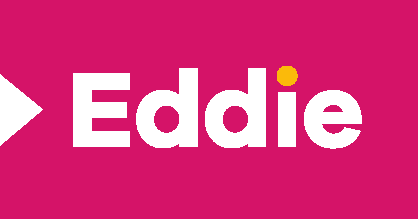Corporate video production typically requires 2-3 times more time for editing than filming. When organizations implement a video co-creation model, where employees handle recording and professional editors finalize production, the overall timeline shrinks dramatically. Companies partnering with professional editors like us at Eddie report 40-60% reduction in total production time, allowing teams to create high-quality video content in days rather than weeks. This collaborative approach eliminates traditional production bottlenecks while maintaining professional quality standards.
How much time does video co-creation save?
The time efficiency gained through collaborative video creation is substantial when compared to traditional production methods. With a co-creation model where employees capture footage and professional editors handle post-production, organizations typically experience a 40-60% reduction in total production time. Traditional video production often creates bottlenecks with scheduling crews, coordinating shoots, and managing complex post-production workflows.
When employees handle recording duties themselves, these bottlenecks disappear. At Eddie, we’ve refined this process to deliver first versions of standard videos within just 24 hours after footage submission. For context, traditional video production can take weeks or even months from concept to completion, while co-creation allows businesses to produce professional content in a matter of days.
The distributed recording approach also enables simultaneous content capture across multiple departments or locations, further compressing timelines. Organizations implementing video co-creation report not just faster production, but increased video output overall – often producing 3-5 times more video content than previously possible with traditional methods.
What is video co-creation in a corporate setting?
Video co-creation represents a collaborative production model where employees within an organization capture raw footage themselves, while professional editors finalize the content. Rather than hiring full production crews or struggling with DIY video tools, companies leverage internal expertise for content while outsourcing the technical aspects of video production.
In this approach, employees who best understand the subject matter conduct interviews, capture events, or record informational content using smartphones or basic camera equipment. The raw footage is then sent to professional editors who transform it into polished, branded videos that maintain consistent quality standards.
This model has gained significant popularity in corporate communications because it combines the authenticity of employee-created content with the professional polish of expert editing. Organizations across industries are adopting co-creation to scale their video production efforts while controlling costs and maintaining quality. The approach proves particularly effective for internal communications, training materials, event recaps, and regular content series like monthly updates.
How does employee involvement in video recording reduce production time?
When employees handle recording responsibilities, several critical time-consuming elements of traditional video production are eliminated. First, scheduling conflicts and coordination challenges disappear – employees can record content when it makes sense for their schedules, without accommodating external film crews. This flexibility alone can save weeks in the production timeline.
Additionally, employee involvement enables simultaneous content capture across multiple locations or departments. Rather than moving a single film crew from place to place, different teams can record content concurrently, then submit all materials for professional editing.
The insider knowledge employees bring also streamlines the process significantly. They understand the subject matter deeply, requiring less preparation and fewer retakes. This approach also eliminates travel time for production crews and reduces equipment setup/teardown cycles for each shooting location.
Many organizations implementing this model report that videos which previously took 3-4 weeks to produce can now be completed in just 3-4 days with the co-creation approach.
What tools are needed for efficient video co-creation?
Successful video co-creation requires the right balance of accessible recording technology for employees and professional editing tools for producers. For employee recording, smartphones with good cameras provide an excellent foundation, though external microphones are crucial for professional audio quality. Simple smartphone stabilization equipment, like tripods or gimbals, helps ensure usable footage.
Secure, high-capacity file-sharing platforms are essential for transferring raw footage efficiently. At Eddie, we use our proprietary platform called Cobie, which streamlines the entire process—from footage upload to feedback and final delivery. This purpose-built ecosystem significantly reduces administrative time.
For the editing side, professional editors need advanced post-production software including comprehensive video editing suites, color grading tools, audio enhancement capabilities, and animation software. Having established templates and brand elements readily available further accelerates the editing process.
Video co-creation also benefits from communication tools that facilitate clear direction and feedback between employees recording footage and professional editors finalizing the content. The right combination of these tools can reduce production time by eliminating technical barriers and streamlining workflows.
How does professional editing impact the co-creation timeline?
While the co-creation model distributes recording responsibilities to employees, professional editing remains the critical component that ensures quality and efficiency. Having dedicated editors like our team at Eddie significantly streamlines the post-production process in several ways.
First, professional editors work with remarkable speed and precision compared to non-specialists. What might take an amateur editor days to accomplish can be completed in hours by an experienced professional. This expertise directly translates to faster turnaround times without sacrificing quality.
Second, professional editors maintain consistent quality standards and branding across all videos, reducing revision cycles. They apply established templates, graphics packages, and company branding elements automatically, eliminating the need to recreate these elements for each video.
Additionally, experienced editors can quickly identify the strongest footage and most impactful structure for each video, reducing time spent on content organization and selection. With established workflows and dedicated focus, professional editors in a co-creation model typically deliver first versions within 24 hours of receiving footage, with minimal revisions needed.
Video co-creation time-saving benefits: Key takeaways
The collaborative approach of video co-creation delivers substantial time savings while maintaining professional quality standards. By distributing recording responsibilities to employees and centralizing editing with professionals, organizations can dramatically accelerate their video production timelines.
To maximize time savings, companies should implement clear guidelines for employee recording, provide basic training in video capture techniques, and establish streamlined workflows for footage submission and feedback. Organizations can measure their efficiency gains by tracking metrics like average production time per video, number of videos produced per month, and time spent in revision cycles.
As organizations scale their video co-creation efforts, they can maintain efficiency by creating content calendars, developing repeatable video formats, and building a library of templates and brand elements. The most successful implementations balance employee autonomy in capturing authentic content with professional oversight to ensure consistent quality.
This approach not only saves time but also builds internal video expertise, making each successive production more efficient. With video co-creation, organizations can transform their communication strategies through increased video output without proportional increases in time investment or budget.
If you’re interested in learning more, contact our team today.

